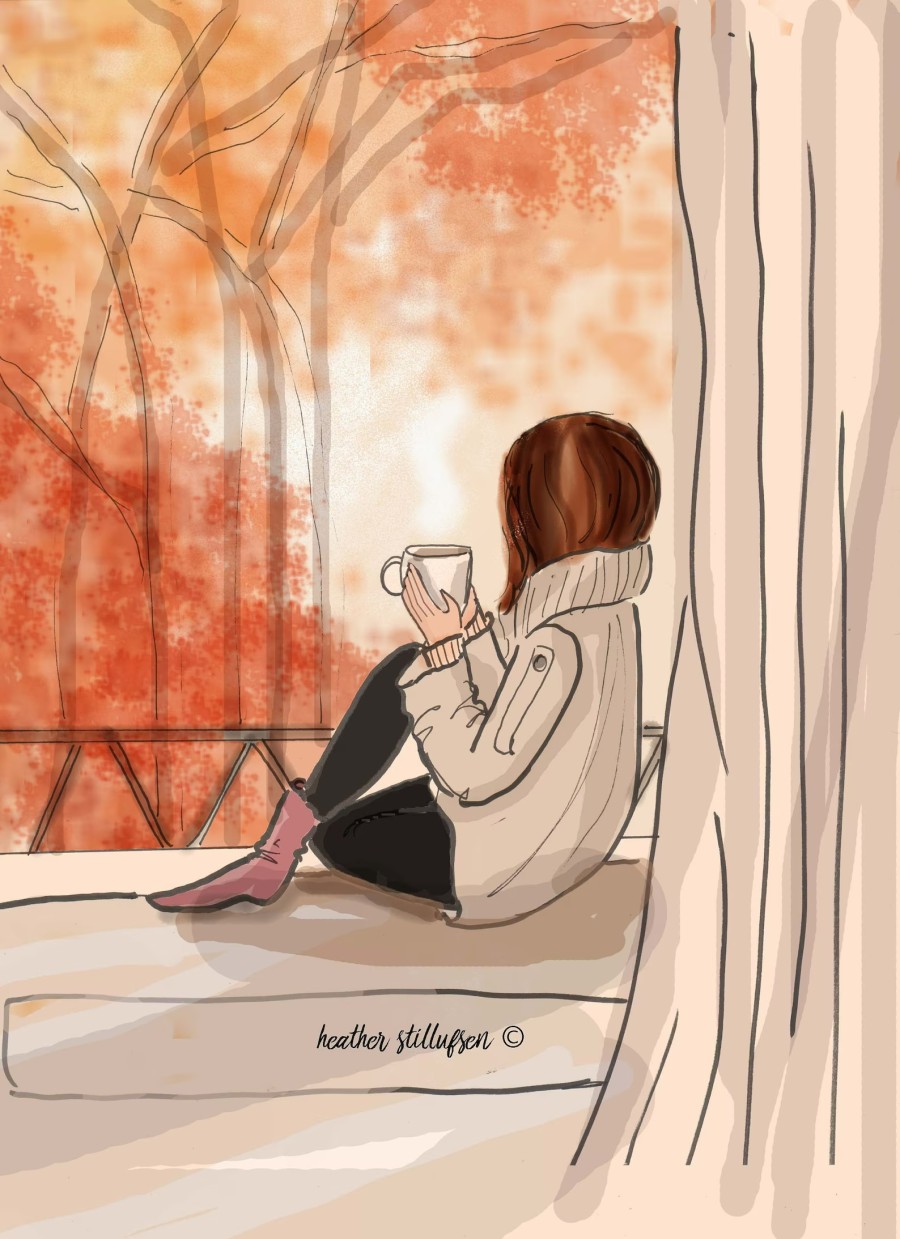Sustainable Sofas and Armchairs: Eco-Seating
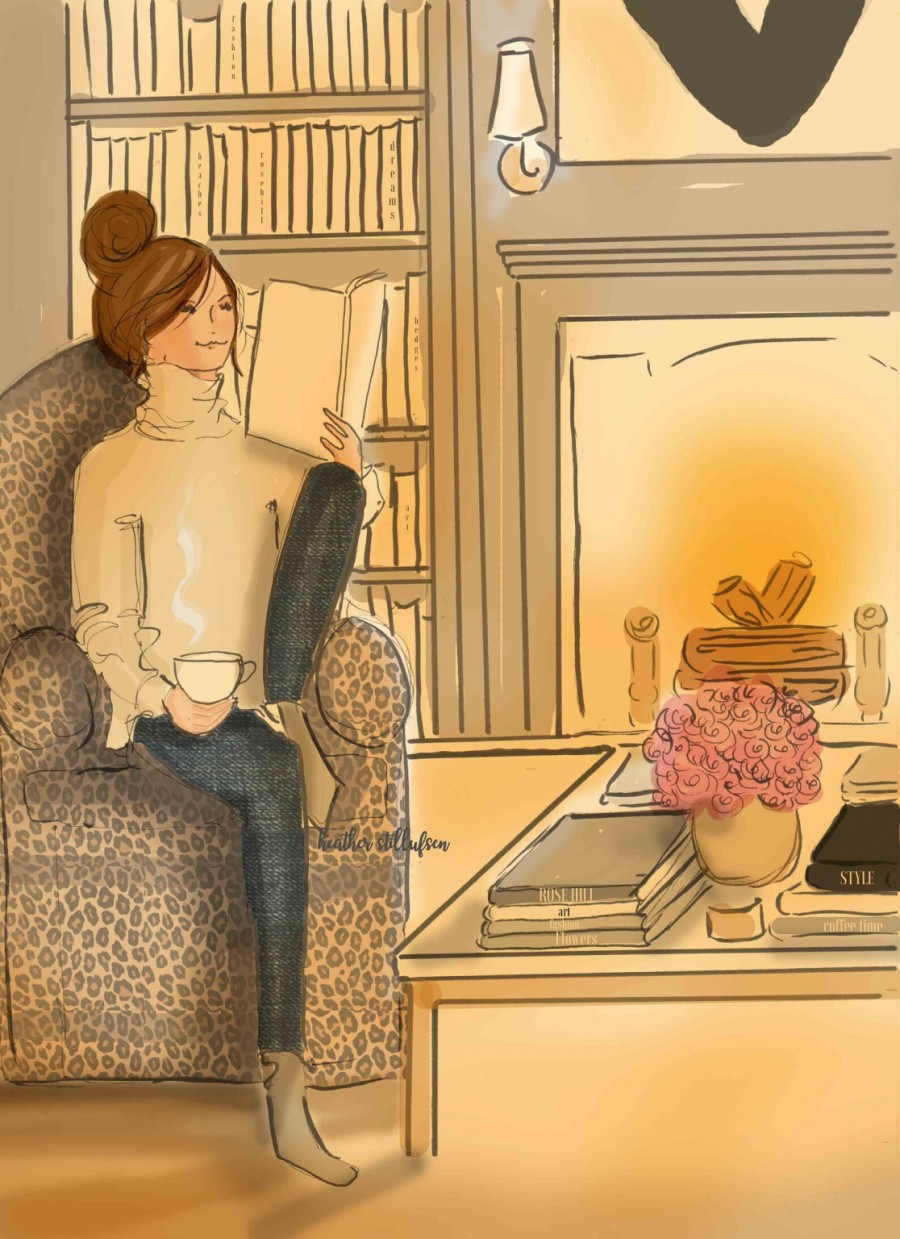
Choosing a sofa and armchairs is usually an expensive decision. So when time comes to replace, here are some more sustainable options (including modular options that grow with your family, rather than having to buy another set). You’ll also learn where to find affordable sofas and armchairs, if you’re on a budget.
Also read our post on fireplace safety.
Choosing Sustainable Sofas & Armchairs
To find truly sustainable sofas and armchairs, look beyond the label. These pieces should stand up to everyday use and wear, without costing the earth. Start by checking for:
- FSC-certified Wood (frames, legs) from sustainable forests
- Recycled metals (frames, joints) that uses less resources
- Organic textiles (covers, filling) grown without chemicals
- Plant-based foam (cushions) for fewer toxins
Benefits of Modular Sofas for Sustainability
A modular sofa lets you build and shape your seating to fit any room or life stage. Simply put, you can add, remove, or rearrange sections whenever your needs change. Here’s why they’re a win for sustainability:
- Durability: Built for repeated assembly and moves.
- Customisable: Fits small flats and large living rooms alike.
- Easy to repair: Faulty section? Replace just that part, not the whole sofa.
- Less waste: Fewer full replacements mean less landfill.
- Longer life: Keeps going even when your family grows or you move out.
Habbio: Vegan Modular Sofas
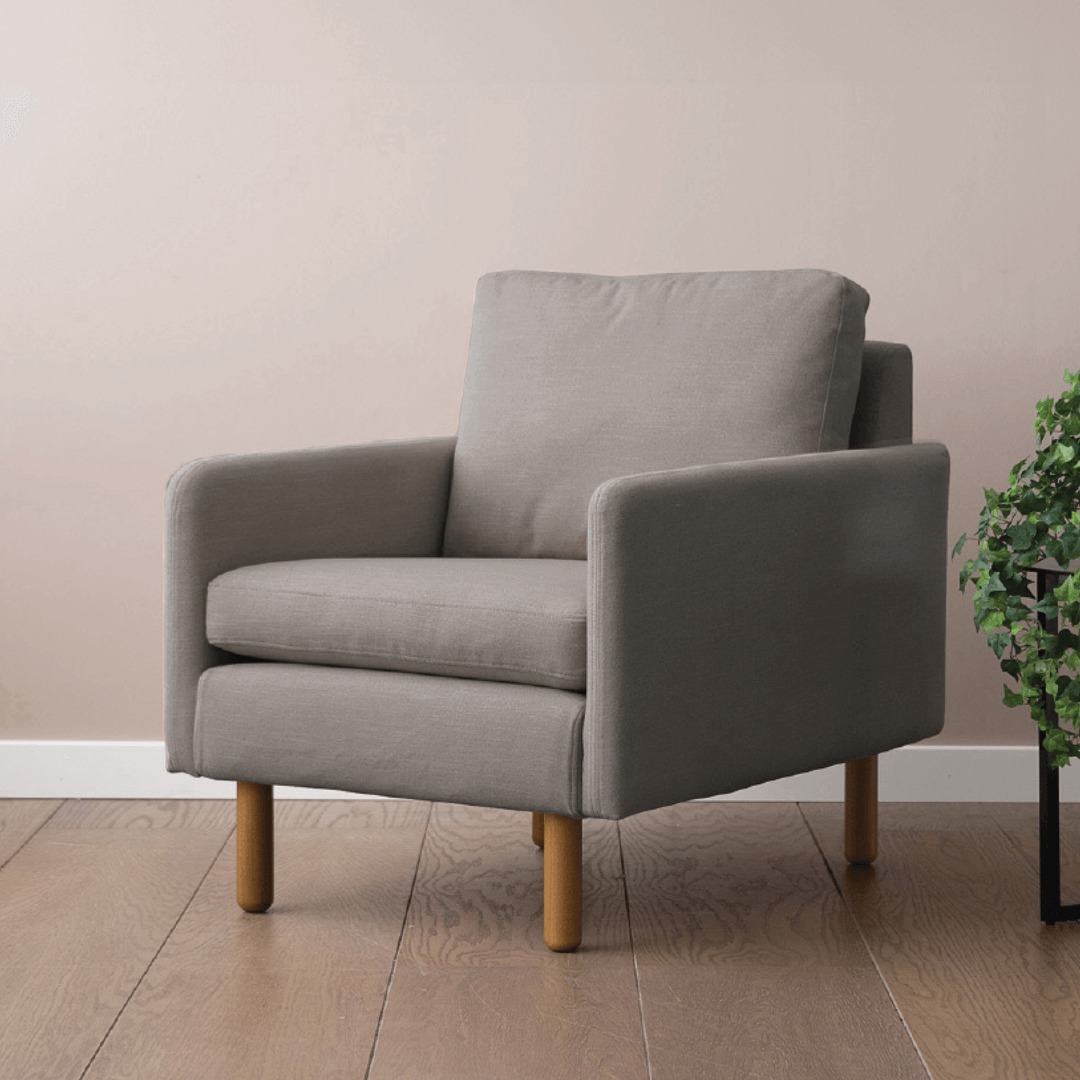
Habbio has created England’s first vegan-certified sofa, which includes many styles and colours of sofas, plus the company also makes sofa-beds and sells refurbished options, for people on a budget.
Designed to change with your lifestyle, these sofas are modular, meaning you can add new parts as your family grows, without having to throw out and buy a new sofa. The company also makes sofa-beds and sells refurbished options, for people on a budget.
You can also disassemble these sofas (no tools required) if you move house, and buy extra loose covers. The sofas are delivered in a box that squeezes through doorways (and goes upstairs without you swearing!). You can even order collection of your old sofa for recycling.
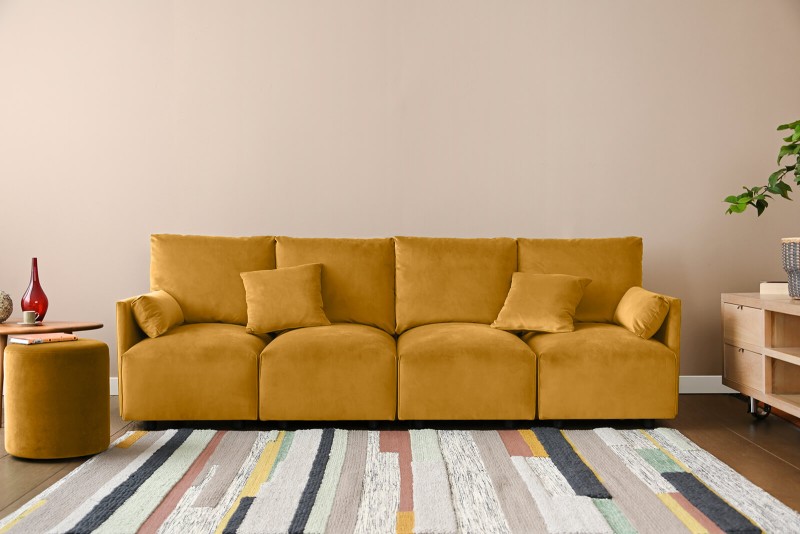
Made to last (with a 15-year guarantee), these sofas are made in Derbyshire by artisans from a family with 70 years experience in making furniture. Their workers are paid at least 20% more than the living wage, with no zero hour contracts.
This company uses 90% fewer chemicals than other sofa makers, and chooses nontoxic and biodegradable alternatives where possible (tomatoes have more formaldehyde!)
They use sustainably-sourced wood and fabrics made from recycled plastic bottles (if laundering, use a microfibre filter).
Cosy Threads and Zero Boucle are water/stain repellent and should be wiped with a damp cloth only. All their fabrics are naturally stain-resistant. Usually a sponge, soap and water should fix spills, allow to dry naturally. Their nontoxic treatments comply with UK fire regulations.
These retailers often provide extensive information about their materials and practices, making it easier to choose a sofa that aligns with your values.
How to Clean Sofas and Armchairs
When you care well for your sustainable sofa or armchair, you keep it out of landfill and looking its best. Even the greenest furniture breaks down faster with rough treatment and harsh cleaning products. A little effort goes a long way.
A simple good vacuum and airing should do the trick. For stains (if you can’t wash the covers), simply mix a teaspoon each of biodegradable dishwash liquid, white vinegar, baking soda and warm water, then it will froth up. Apply to stains, leave to dry for 10 minutes, rinse and leave to dry.
- Cornstarch soaks up grease stains. Sprinkle, let sit, then vacuum off.
- For quick dry cleaning, sprinkle bicarbonate of soda, let set half an hour, then vacuum up.
Always test on an inconspicuous spot first. Blot, don’t scrub, to keep fabric fibres strong.
Arranging Sofas for Comfort and Conversation
Your sofa isn’t just a perch for movie marathons. Its placement shapes the flow and feel of any room. For the best mix of comfort and conversation:
- Face sofas and armchairs towards each other to encourage eye contact and easy chatting.
- Leave walking space between seats so people don’t need to squeeze by.
- Add a low table in the centre for drinks and snacks, keeping things casual.
- Aim for symmetry to create calm, well-balanced spaces.
- Use rugs or lamps to define cosy ‘zones’, especially in open-plan areas.
Recycling and Disposing of Old Sofas Sustainably
Outgrown your old sofa? Don’t just dump it. Plenty of options keep furniture out of landfill and help others.
- Sell or donate if your sofa’s still solid. Charities and second-hand shops will often collect for free. It must however be clean, and have fire safety tags intact.
- Upcycle with fresh covers or legs, or break down for smaller projects (pet beds, storage).
- Contact local recycling centres that accept large furniture, some break down materials for reuse.
- Check with manufacturers: some offer take-back or recycling schemes with new purchases.
Before disposing, remove any non-recyclable parts, such as staples or nails, and keep textiles separate.
Recycled Ocean Plastic Drinks Coasters

These ocean plastic coasters make a lovely unique zero waste gift for others or yourself, to protect table tops. Unlike most coasters that are made from plastic, these are made from ocean plastic, which has been collected by hand from the scenic Cornish coast.
So good for marine creatures too!
Sold in sets of 2 to 4, the more people buy these, the more plastic waste the brand can supply by removing more plastic waste (fishing nets and crates, water bottle tops, buckets and spades). The bright colours are naturally derived from whatever waste is collected.
And due to being plastic, the coasters are strong and waterproof, and should last you years. By supporting this brand, you can leave a legacy of cleaner oceans in Cornwall, for years to come.
Pretty Coasters Made from Recycled Newspapers
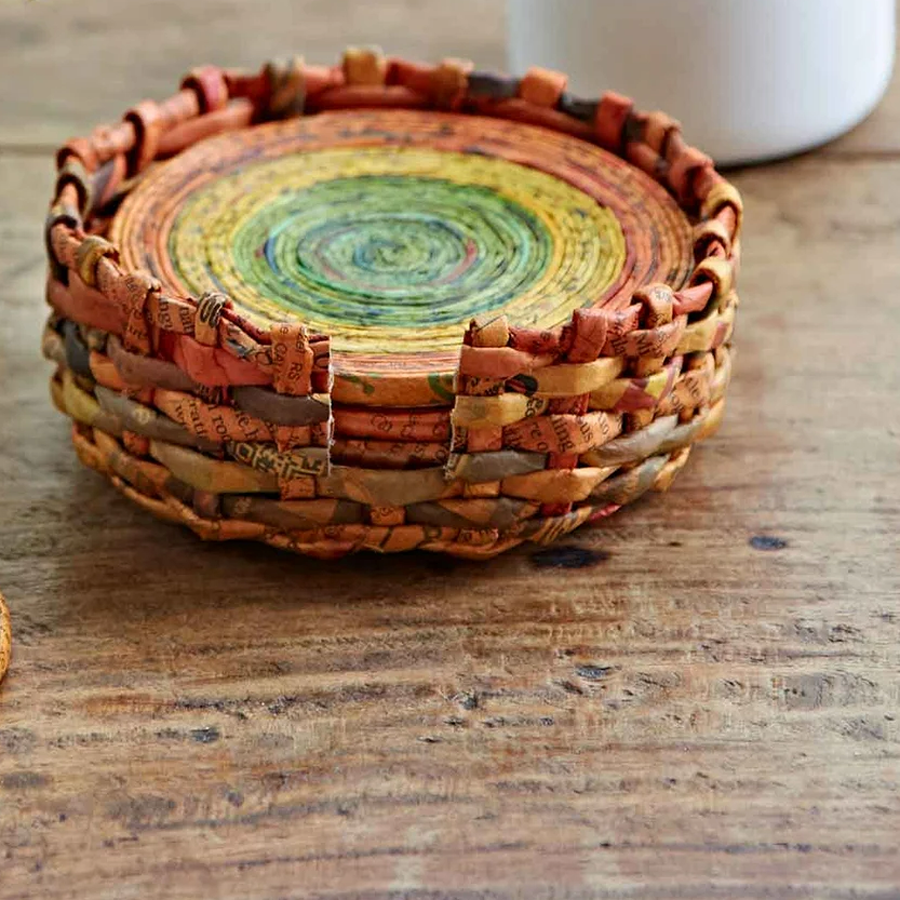
Stop spills, by using these recycled newspaper coasters, sold as a set in their own holder. Handmade by a social enterprise in Sri Lanka, these coasters help to reduce the amount of global waste, and cut down on use of unsustainable resources.
It’s true that newspaper breaks down in landfills (unlike plastic). But this still causes methane, a potent greenhouse gas to be released. So making old newspapers into other things, helps to reduce emissions and therefore climate change.
Eco-Friendly Bowls for Trinkets
All homes need bowls to store things in, from keys to bits and bobs you may need to put away later on. But rather than bowls made from new plastic or concrete, consider ones that use up waste, rather than create it.
Many people have a bowl for trinkets on their side or coffee table (don’t put sweets or chocolate in them, near young children or pets).
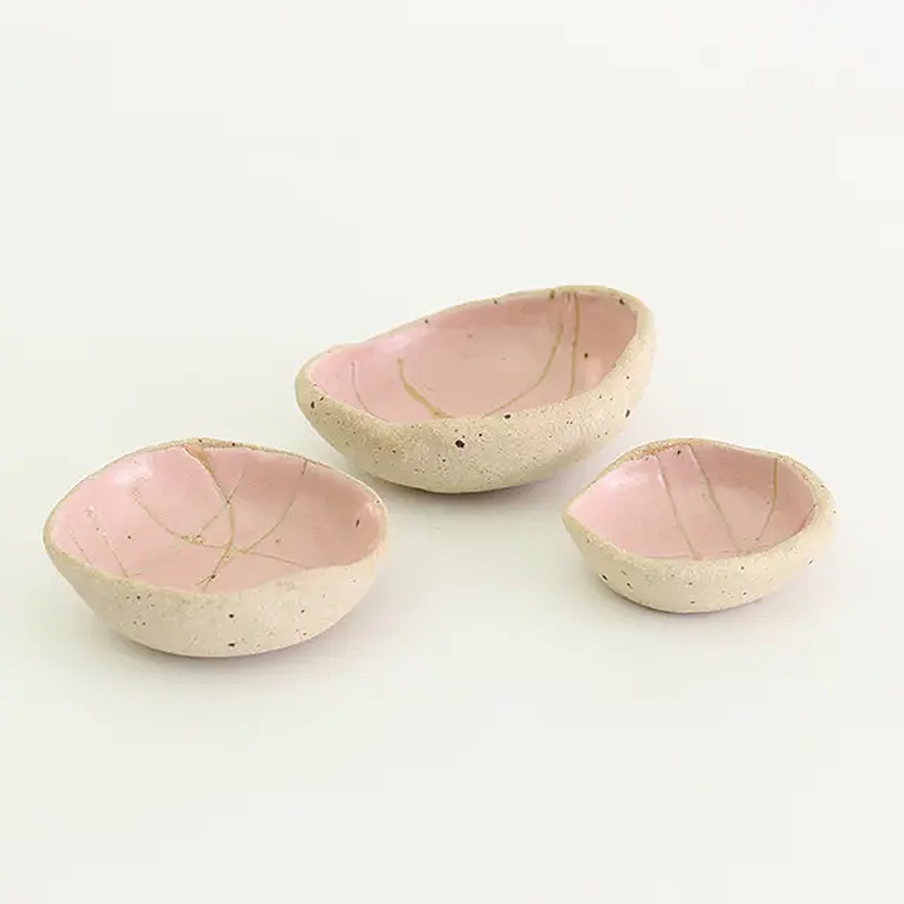
These beautiful handmade wonky bowls are so pretty, ideal as pretty trinket dishes to keep keys and other items in the home. Each one is made by hand, with raw flecked clay exteriors and unique organic designs.
The wonky bowls are in 6 colours and three sizes, to mix and match. You can also use them to keep jewellery or even as unique dishes for sauce at the time. How much nicer to support local artisans, than buy the same-old bowls from the big decorative stores?
Pottery is a popular hobby, but an energy-intensive one that also sometimes uses rare mined clays and animal ingredients for glazes. Read more on greener pottery.
Pretty Bowls (from recycled newspaper)
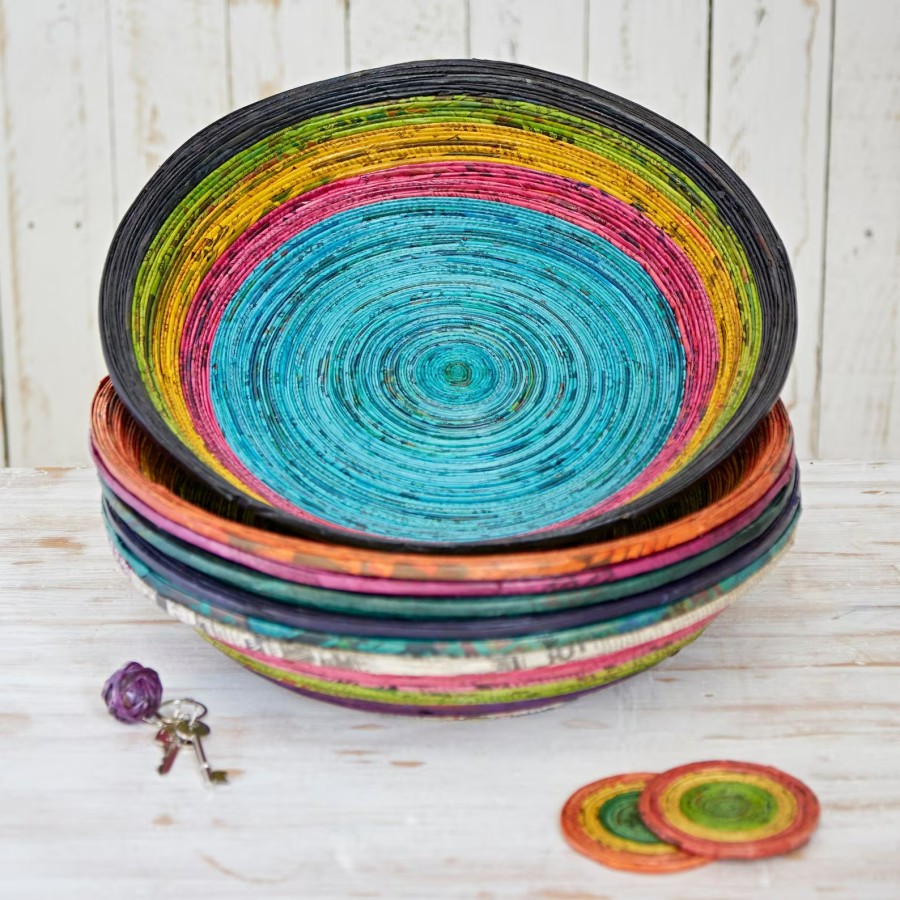
The bowls can be used to stash your keys or anything small that’s likely to get lost. You could even use it as a tip tray for a small shop or eaterie.






